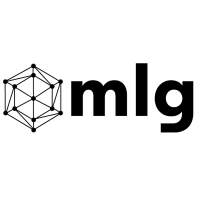|
|
|
Security |
|
|
|
|
Public Blockchain with security features built in.
Lamport digital signature algorithm. Claims to be resistant to quantum computer attacks.
Customized P2P network with data storage encryption, location transparency, source nontraceability
Merkle Patricia Trie data structure

Although the hash algorithm built into Bitcoin and Ethereum is secure with todays technology from brute force attacks, quantum computing may support enough computational power to compromise these algorithm.
|
Similar security models to Hyperledger Fabric, but also incorporates the IBM Cloud Services as an added security layer when using the platform.

For more information:
http://hyperledgerdocs.readthedocs.io/en/latest/security_model.html
|
"Block Security Protocol" (BSP)

Employs a BSP to implement the signature function on each data bock during PoA cosnensus. Only the blocks with authorized signatures can be mined and accepted.
|
|
|
|
Permissionless

|
Permissioned

|
Permissioned Aspects

Only permissioned parties can view the raw transactional data stored in the public blockchain. To all others, it will be hashed and secured.
Anyone can become a node, but there is a hard cap of 101 Authority Nodes. It requires a great deal of transparency and public capital to become a node.
|
|
|
|
Based on zero knowledge proof. Hides the send, receipt address and transfer amount.

Similar in function to the zk-SNARK feature Ethereum added during their Metropolis release.
|
Private channels

Fabric has a unique concept of channels that supports transaction privacy. Private channels are restricted messaging paths that can be used to provide transaction privacy and confidentiality for specific subsets of network members.
|
Yes

Transaction Data Privacy Protocol (TxDP): Ensures privacy of transaction data.
|
|
|
|
Algorithms |
|
|
|
|
Fast Paxos PoS variant.
The consensus of TRON adopts a three-step strategy.

1. Kafka-based technology system: implement a centralized consensus algorithm.
2. Raft-based distributed consensus mechanism: realize the centralized and distributed leapfrogging. Improves network function/distribution and lays the foundation for distribution with no logical center.
3. Consensus mechanism of Proof of Stake and realize the Byzantine Fault Tolerant Consensus.
|
Plugable consensus (PBFT)

Fabric’s notion of consensus is broad and encompasses the whole transaction flow, starting from proposing a transaction to the network to committing it to the ledger. It uses the plugable Byzantine fault tolerance (PBFT) algorythm
|
Proof of Authority

Consists of 101 Authority Nodes that are controlled by separate, self-interested entities. Due to the variety of companies, this will secure the network and ensure a trustless environment. PoA allows for a higher number of TPS than PoW and PoS, meaning VeChain can support up to 10,000 TPS.
|
|
|
|
Efficiency |
|
|
|
|
Moderate

|
Varies

Depends on implementation
|
No data

|
|
|
Block Confirmation Time
Details
|
Fast

|
Varies

Depends on implementation
|
Fast

Set during launch at 10 seconds, and will be iterated after use.
|
|
|
|
Development |
|
|
|
Proprietary Codebase
Details
|
Open source but goverened by the TRON organization

Built on Ethereum, but planning to move to own main net in June 2018
|
Hyperledger Fabric is open source. IBM Blockchain is a proprietary layer that sits on top of Hyperledger as a simple to use platform accessing the blockchain

|
Open source with proprietary applications

https://github.com/vechain
|
|
|
|
General |
|
|
|
Blockchain / DLT type
Details
|
Public

Open source public blockchain fuelled by cryptocurrency.
|
Federated / Consortium, Permissioned Network

Federated Blockchains operate under the leadership of a group. As opposed to public Blockchains, they don’t allow any person with access to the Internet to participate in the process of verifying transactions. Federated Blockchains are faster (higher scalability) and provide more transaction privacy - important aspects for Enterprise focused deployments.
Based on the Hyperledger Fabric framework.
|
Public

|
|
|
|
Similar to Ethereum:
Generic, with DApp and Smart Contract support for wider applications

It is not modularity that stands out but the provision of a generic platform suitable for various types of transactions and applications
|
Plug + Play Architecture
Easy to operate software platform to build out use case, test, and implement

https://www.ibm.com/blockchain/platform/
|
Yes

VeChain exists as a platform to be developed on. Meaning the core features and services can be applied in a number of industries. Some utilizing IoT, some just using the consensus mechanism.
|
|
|
|
Currently supports 15 TPS as it is on the Ethereum platform. Will be able to support up to 1000 TPS once main net launches

Scalability is a core feature for TRON. They want to be able to support large commercial projects, while minimizing transactions fees and time.
|
Supports 1000 TPS. Designed for high throughput business applications. Scales relative to Hyperledger Fabric new developments.

|
50 - 10,000 TPS

50 TPS is currently the maximum. Once VeChain moves to thier mainnet, they plan to scale their TPS to 10,000. This will enable Enterprise level support for financial and sensor data.
|
|
|
|
Varies

https://tronscan.org/#/blockchain/stats
|
500 transactions per block

Same as Hyperledger Fabric
|
Depends on implementation

|














